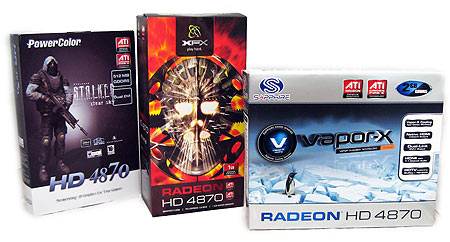How Much RAM Does Your Graphics Card Really Need?
Conclusion
We've been through a lot of different games, settings, and data. What's the bottom line? How much graphics RAM is the right amount? We've seen enough to formulate some general guidelines.
For the gamer, there are three main factors that have the most influence on how much graphics RAM you'll need: resolution, visual quality detail settings, and AA. For the most part, 512MB of RAM seems sufficient to push one of these factors to the limit, and in most cases, it can handle two of them at once. But if you plan to maximize all three--the highest resolutions, visual quality settings, and AA--then more video RAM than 512MB is a good idea.
The primary consideration should probably be resolution, because this is a hardware limitation for many of us. Typically, 20" or smaller monitors will cap out at 1680x1050, so in this case, spending extra on 1GB of graphics RAM might be frivolous. Conversely, if your monitor is 21" or larger with a 1920x1200 native resolution, purchasing a graphics card with 1GB of RAM might be a wise investment for only a little extra money.
A 2GB card is probably only realistically useful for folks who push 1920x1200 resolutions and above, and who demand the highest visual quality settings in conjunction with AA. Since the price difference is substantial, a graphics card with 2GB of RAM is probably overkill for anyone who has a monitor with a native resolution lower than 1920x1200.
There are other factors to consider, too. Longevity might be a concern as games will inevitably require more and more graphics RAM as time goes on. More importantly, do not forget that the amount of RAM on a card does not indicate its relative performance--a 512MB Radeon HD 4870 or 896MB GeForce GTX 260 will always be faster than a 2GB Radeon HD 4670 or a 2GB GeForce 9600 GTS. The point is that the type of card is far more important than the amount of RAM onboard when it comes to raw performance. For a general idea about what cards are faster than others, take a look at our video card hierarchy chart.
In the final analysis, even 512MB of graphics RAM can provide excellent high-resolution service as long as the user is aware that lowering quality settings and AA will allow the card to perform at its peak potential. However, if you plan to use the highest visual quality settings in addition to AA, it's likely worth the extra money for a 1GB or even 2GB card.
Get Tom's Hardware's best news and in-depth reviews, straight to your inbox.
Don Woligroski was a former senior hardware editor for Tom's Hardware. He has covered a wide range of PC hardware topics, including CPUs, GPUs, system building, and emerging technologies.
-
radiowars Great article guys. I've debated this many times with friends- good to see a definite result. Heh, GTX 275 w/ 896 works well @ 1680x1050 for me. I doubt I'd need anything higher than that for my resolution.Reply -
burnley14 I really like the alternating images you use in these articles, they are very helpful and make it much easier to compare the various detail settings.Reply
Also, great article overall. Keep up the good work! -
cleeve Thanks burnley, animated GIFs are a bit of a pain to make, but it's nice to know they're appreciated. :)Reply -
blueer03 This was very interesting. But I would like to see the performance difference from a mid-stream (say a 4850) as compared to a high end video card. Would it have made sense to spring for the 1GB 4850, or would there be no difference because of the cards inherent limitations? And the same thing with the lower level cards. At what point in the hierarchy of video cards does springing for more than the reference memory levels make sense?Reply -
cleeve With lower end cards you'd see the same effect, but with the lower frame-rates that those cards would produce. The end result is the same: one they run out of RAM at a certain setting, the performance will suffer, but until then it's the same across the board.Reply -
cleeve knutjbHow much ram will the 5870 eyefinity version need?Reply
Depends on the resolution and settings just like everything else. but it's a good question, if there's enough interest in this article I'll look into that in the future. -
liquidsnake718 Im surprised that Crysis doesnt utilize all the RAM(even for an older title) for distance similarly to titles like GTA. Im sure the new Crytek engine will make use of Ram so we can see even buildings and huge alien robots further in the distance with vivid details.Reply
We can only look forward to a more intense and visually stunning Crysis 2 as I can only imagine how the story would progress and end up being in space. I can imagine huge asteroids looking as real coming at the player using nvidias 3d vision and utilizing AA in order to make it apparent from a distance.
Think Halo style world but with unrivaled graphics and a more realistic feel with DX11. -
Arkz il tell ya whats a bitch, i have a 1920x1080 monitor, nice? yes. I have an 8800GT too.. nice? kinda.. its the 256MB version.. so.. if i wanna turn up the sexiness i get baaaad fpsReply

